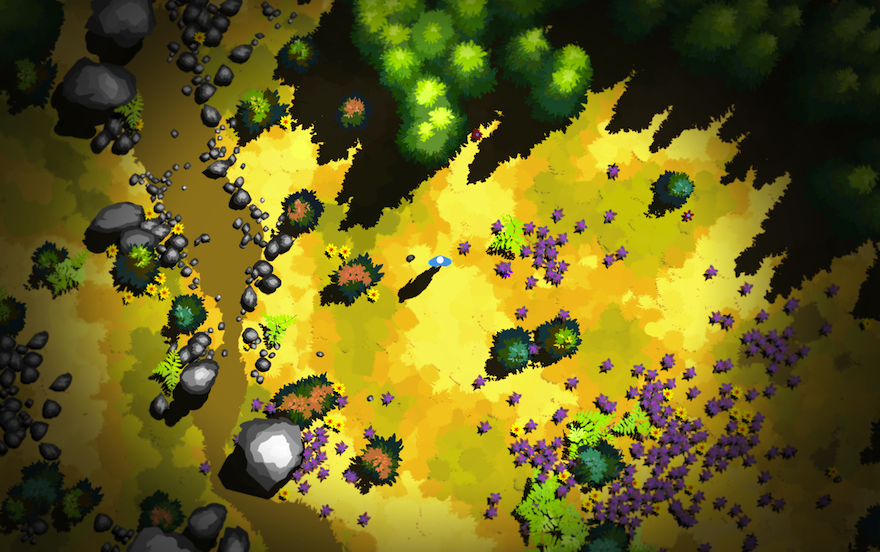Future Unfolding swaps out enemies for a sentient forest

I played a very early version of Spaces of Play’s Future Unfolding over a year ago in San Francisco. It was a wholly uneventful experience. The game looked largely the same as it does today, just devoid of, well, actual play. There were no paint-splattering wildebeests, no chiming crystals, no wormholes that opened under your feet. There was the forest, but not much else. The future hadn’t unfolded yet.
“In a way, having a vision is like seeing a mountain in the far distance. You can’t see the path yet that leads you through the forest,” Mattias Ljungström and Marek Plichta tell me, getting philosophical on game design as they explain how the woodland became lively and strange and exploding with colorful streaks. It’s a metaphor both for playing and creating the game.

Future Unfolding represents an intuitive, even playful process of improvised prototyping, akin to free jazz and improv comedy. The game puts an emphasis on exploration, so the old model of game-making, where every detail is meticulously flowcharted beforehand, doesn’t fly. Of course, this means making mistakes. “It’s easy to get lost in a pool of ideas that don’t fit,” Ljungström and Plichta say. But it’s better than the alternative, because there is nothing remotely exploratory about flowcharts.
For example, instead of focusing on “mechanics” or “enemy patterns” or the normal “gameplay” things games are “about,” they built a large area covered with trees and overgrowth. “We kept iterating on the joy of wandering around through the forest,” they say, adding trees that bend to accommodate players squeezing through them and forging their own trails. The rest fell into place. So now, instead of fighting the enemies, you squeeze through the dense forest into safety. “We wouldn’t have found this if we had planned out everything from the beginning,” Plichta says.
Future Unfolding is coming to PC, Mac, and Linux later this year.



